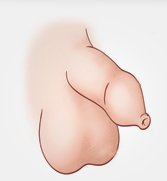Scientific Editor: Editorial Board ISUD website
What is Phimosis and what is Circumcision?
Phimosis is the condition when the foreskin, i.e. the skin covering the head of the penis (glans), is not retracted. Phimosis is caused by recurrent or chronic inflammation of the glans and foreskin (Balanoposthitis).
Circumcision is the removal of the foreskin, so that the glans is permanently exposed and uncovered by skin.
When is Circumcision performed?
Circumcision is the indicated surgical repair of phimosis and it is recommended when the man's or boy's penile glans cannot be exposed, or when the glans is exposed but causes problems of stenosis and pain during erection.
What preparation is required?
No special preparation is required, except when the man receives anticoagulation treatment. Then, the said treatment should be discontinued for several days before surgery and, as appropriate, your doctor can replace the anticoagulation treatment with abdominal injections.
How is Circumcision performed?
The surgery is performed under local anesthesia distal to the base of the penis. Next, the bridle is dissected and ligated and the skin with sclerosis and stenosis is removed. Meticulous haemostasis and suturing of the wound is performed. Finally, gauze and elastic bandage is put around the penis. In children and young men the surgery can be performed under general anesthesia.
The average hospital stay is a few hours.
What about after surgery?
Upon discharge from hospital, you will receive specific instructions about:
- when it is safe to restart your previous anticoagulant treatment
- when to resume to vigorous physical activity and work
- what antibiotics to receive postoperatively
- how to take care of the wound after surgery
- If there are non-absorbable sutures, they should be removed in seven to ten days after surgery.
What are the effects of the intervention on patient's life?
Most patients do not face any problem after surgery. Complete healing usually occurs in 10-12 days, and complete recovery may require 2 weeks until full activity is resumed. A typical office work can be resumed 1-2 days after surgery, and sexual intercourse is usually feasible after two weeks.
After surgery, a small rate of patients may present hematoma, which is treated with pressure on the wound and has no effect on the patient. In extremely rare cases, contamination of the surgical wound may occur, which is treated with the appropriate use of antibiotics.



